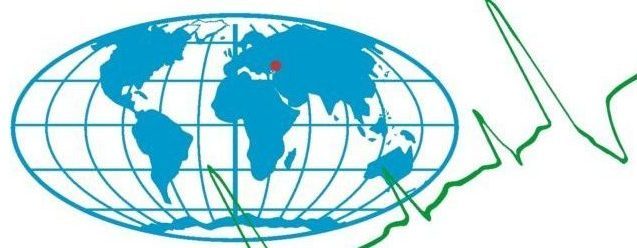I.B. Shirokov1, P.A. Evdokimov 2,1, E.I. Shirokova1
1Sevastopol State University, RF, Sevastopol, Universitetskaya St., 33
2Institute of Natural and Technical Systems, RF, Sevastopol, Lenin St., 28
E-mail: shirokov@ieee.org, evdokimov@ieee.org, shirokova@ieee.org
DOI: 10.33075/2220-5861-2021-1-68-78
UDC 504.064.38
Abstract:
The article considers a new approach to air monitoring based on phase-measurement in the SHF range and homodyne frequency conversion. Information about the change in the air composition is obtained by determining the phase progression of the microwave signal when it passes through the environment under study. At the same time, to determine the change in the content of exclusively harmful gases in the air composition, the meteorological component of the environment is subtracted from the information signal.
The implementation of the method involves the organization of a monitoring system consisting of several microwave measuring lines synchronized with a monitoring center through a VHF communication channel, which will allow for global and continuous monitoring of changes in the composition of the air environment. The block diagram of the developed system is presented and its individual blocks, the theoretical possibilities of its operation are considered. An experimental study of the influence of meteorological characteristics of the environment on the phase progression of the microwave signal was also carried out.
Keywords: microwave oscillations, phase measurements, phase progression, dielectric permittivity, homodyne conversion, air composition, meteorological characteristics.
To quote: Shirokov, I.B., P.A. Evdokimov, and E.I. Shirokova. “Monitoring System of Changes in Air Composition.” Monitoring Systems of Environment no. 1 (March 25, 2021): 68–78. doi:10.33075/2220-5861-2021-1-68-78.
LIST OF REFERENCES
- Rukovodjashhie principy razrabotki nacional’nyh strategij ispol’zovanija monitoringa kachestva vozduha i vody kak sredstva jekologicheskoj politiki. N’ju-Jork; Zheneva. OON, 2012. 50 p.
- Turichin A.M., Arshanskij B.Je., Zograf I.A. Jelektricheskie izmerenija nejelektricheskih velichin / pod obshh. red. P.V. Novickogo. M.: Jenergija, 1966. 690 p.
- Li C., Yin Z. “Infrared gas sensor,” Proc. of the Third International Symp. on Electronic Commerce and Security Workshops. Guangzhou, China, 29-31 July 2010, pp. 101–104.
- He Y., Zhang Y., Kan R., Wang L., You K., and Liu J. “Study on mash gas monitoring with distributed multipoint fiber optic sensors system in coal mine,” IEEE Proc. of Symposium on Photonics and Optoelectronics (SOPO), Shanghai, China, May 2012. pp. 21–23.
- Shirokov I.B., Ivashina M.V. “Amplitude and Phase Progression Measure-ments on Microwave Line-of-Sight Links,” IEEE Proc. of Int. Symp. on Geoscience and Remote Sensing (IGARSS’01), Sydney, Australia, 9-13 July 2001, pp. 3144–3145.
- Shirokov I.B., Shaban S. “Experimental Investigations of Amplitude and Phase Progression Fluctuations on Microwave Line-of-Sight Links,” IEEE Proc. of Int. Symp. on Geoscience and Remote Sensing (IGARSS’02), Toronto, Canada, 24-28 June 2002, Vol. VI, pp. 3559–3560.
- Shirokov I. B., Evdokimov P.A., Shirokova E.I. Sposob opredelenija izmenenija soderzhanija vredonosnyh gazov v vozduhe: pat. 2735058, Ros. Federacija. Zajavl. 16.06.2020; opubl. 27.10.2020. Bjul. No 30. 9 p.
- Mansurov R.Sh., Gurin M.A., Rubel’ E.V. Vlijanie koncentracii ugle-kislogo gaza na organizm cheloveka. Universum: tehnicheskie nauki: jelektron. nauch. zhurn. 2017. No 8 (41).
- Grudinskaja G.P. Rasprostranenie radiovoln. M.: Vysshaja shkola, 1975. 280 p.
- Kiselev V.N., Kuznecov A.D. Metody zondirovanija okruzhajushhej sredy (atmosfery). SPb.: izd-vo RGGMU, 2004. 429 p.
- Teoreticheskie osnovy teplotehniki. Teplotehnicheskij jeksperiment: spravochnik / pod obshh. red. chl.-kor. RAN A.V. Klimenko i prof. V.M. Zorina. M.: MJeI, 2001. 564 p.
![]()
